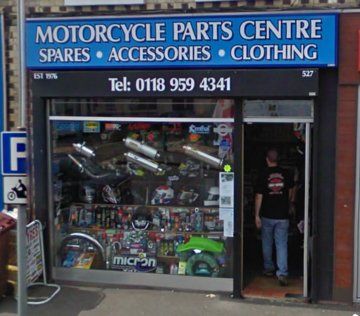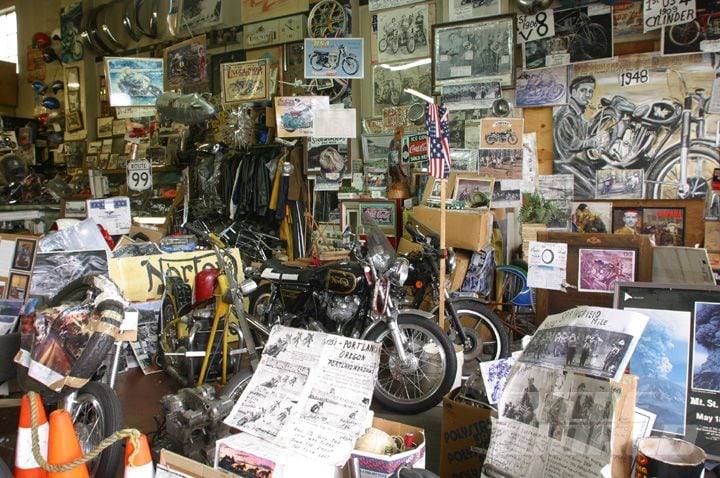Explore the most up to date Motocross Gear NZ for each Degree of Rider
Explore the most up to date Motocross Gear NZ for each Degree of Rider
Blog Article
Comprehending the Crucial Components of a Motorcycle: A Comprehensive Overview for Enthusiasts
For bike fanatics looking to boost their riding experience and ensure their bikes run smoothly, recognizing the vital components of a motorcycle is vital. Each component, from the engine's detailed operations to the crucial role of the braking mechanisms, not just influences efficiency yet likewise security and comfort.
Engine Components

The camshaft plays an important duty in managing the timing of the engine's shutoffs, making certain the accurate opening and closing needed for effective gas and air intake, as well as exhaust expulsion. This timing is essential to maintaining optimal engine efficiency and effectiveness. Furthermore, the carburetor or gas shot system, depending upon the bike design, is accountable for mixing air with fuel in the appropriate ratio for combustion.
The cooling system, either air or liquid-based, functions to keep the engine's temperature within operational restrictions, avoiding getting too hot and making sure long life - motorcycle shop. Each element, carefully developed and integrated, adds to the smooth procedure of the engine, specifying the motorcycle's power outcome and total performance
Transmission System
Important to the bike's functionality, the transmission system guarantees reliable power transfer from the engine to the wheels. This system consists of several important parts, including the clutch, gearbox, and final drive, each playing a crucial role in translating the engine's power into motion. The clutch, normally run by a hand bar, offers to disengage the engine and engage from the transmission, permitting for smooth gear modifications and controlled acceleration.
The gearbox, commonly described as the transmission correct, has a collection of equipments that riders can manually move with to change the bike's speed and torque result. These equipments are arranged in a series that enables the motorcycle to speed up smoothly and preserve ideal engine efficiency across different rates. Most bikes make use of a sequential transmission, needing the biker to shift equipments in a fixed order.
Braking Devices
While understanding the transmission system is crucial to utilizing a motorcycle's power, equally crucial is the capacity to control and quit that power successfully, which is where stopping devices enter play. Brakes are essential for safety and security and performance, giving the biker with the needed control to navigate various surfaces and conditions. Usually, motorcycles include 2 kinds of stopping systems: disc brakes and drum brakes.
Disc brakes are more prevalent in contemporary bikes because of their superior efficiency. They are composed of a brake disc, caliper, and pads. When turned on, the caliper presses the brake pads against the rotating disc, see this here transforming kinetic power into heat, thus slowing down the wheel. This system supplies much better heat dissipation, consistent performance, and enhanced quiting power, especially in wet problems.
On the other hand, drum brakes, though less usual, are still discovered in some motorcycles. They function by pushing brake shoes against the inner surface area of a drum connected to the wheel. While normally much less efficient in warm dissipation and stopping power, drum brakes are easier and extra economical.
Recognizing these stopping systems' subtleties permits bikers to maintain their bikes effectively and value the engineering that makes sure reliable and risk-free stopping.
Suspension and Steering
Suspension and guiding systems are crucial elements that dramatically influence a motorcycle's handling and adventure convenience. The shock absorber, containing forks at the front and shock absorbers at the rear, takes in road abnormalities, enhancing security and control. Front forks, upside down or typically telescopic, compress and rebound to minimize effects, while back shock absorbers preserve tire call with the road, important for grip and safety and security.
Steering, focused around the handlebars, links the biker to the motorbike's directional control. The steering head bearings make sure smooth operation, allowing exact ability to move. Correct positioning and maintenance of these bearings are vital for predictable guiding feedback and reducing motorcyclist fatigue.
The suspension's adjustability is one more vital facet; preload, damping, and rebound setups permit modification to fit different riding problems and styles. This flexibility is essential for enhancing efficiency, whether browsing city roads or dealing with rugged tracks. Innovations like electronic shock absorber offer real-time changes, improving visit homepage ride top quality throughout diverse terrains.

Electrical Equipments
After making certain a regulated and smooth experience through effective suspension and steering systems, interest transforms to the electrical systems, an essential aspect of modern-day motorcycles. These systems play a crucial function not just in starting the engine however additionally in powering various parts that enhance the performance and safety and security of the motorcycle.
At the heart of a motorbike's electric system is the battery, which stores electrical power necessary for starting the engine and powering supporting systems - motocross parts nz. The alternator or generator, paired with the rectifier-regulator, ensures the battery stays billed while the bike functions, transforming power into electric energy and preserving voltage levels
The ignition system, an additional critical element, is accountable for igniting the air-fuel blend in the engine's cylinders. Modern motorbikes usually utilize an electronic ignition system, providing higher effectiveness and dependability contrasted to typical systems.
Lighting systems, including headlights, tail lights, and indicators, are also important, making sure exposure and security for the motorcyclist. Extra electronic elements such as sensors, control systems, and displays contribute to sophisticated features like fuel injection monitoring, anti-lock stopping systems (ABDOMINAL MUSCLE), and electronic dashboards, further enhancing the riding experience.
Final Thought
A complete comprehension of a motorcycle's crucial elements, including the engine, transmission system, stopping mechanisms, suspension, guiding, and electrical systems, is indispensable for fanatics aiming to maximize convenience, security, and efficiency. Mastery of these aspects enables notified choices concerning upkeep and upgrades, eventually boosting the riding experience. By integrating this understanding, riders can ensure their bikes operate at peak effectiveness and reliability, thus optimizing both enjoyment and durability of their automobiles.
For motorcycle lovers looking to boost their riding experience and guarantee their bikes run smoothly, comprehending the essential elements of a bike is paramount.Essential to the motorbike's capability, the transmission system ensures effective power transfer from the engine to the wheels.While recognizing the transmission system is key to see this website utilizing a motorbike's power, just as important is the capability to manage and quit that power properly, which is where stopping mechanisms come into play. Normally, bikes feature two types of braking systems: disc brakes and drum brakes.
A complete understanding of a bike's essential components, including the engine, transmission system, braking mechanisms, suspension, steering, and electrical systems, is essential for enthusiasts aiming to optimize security, comfort, and performance.
Report this page